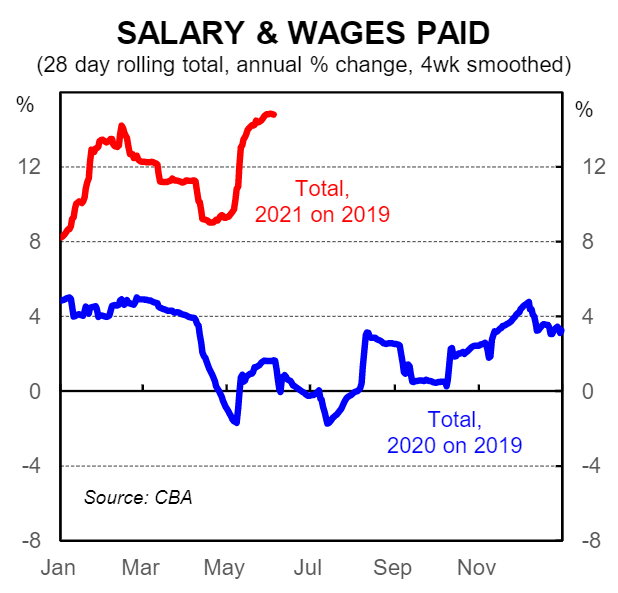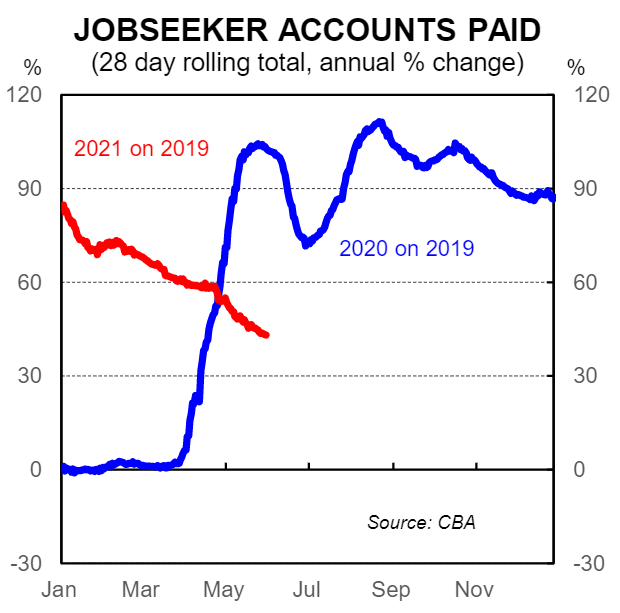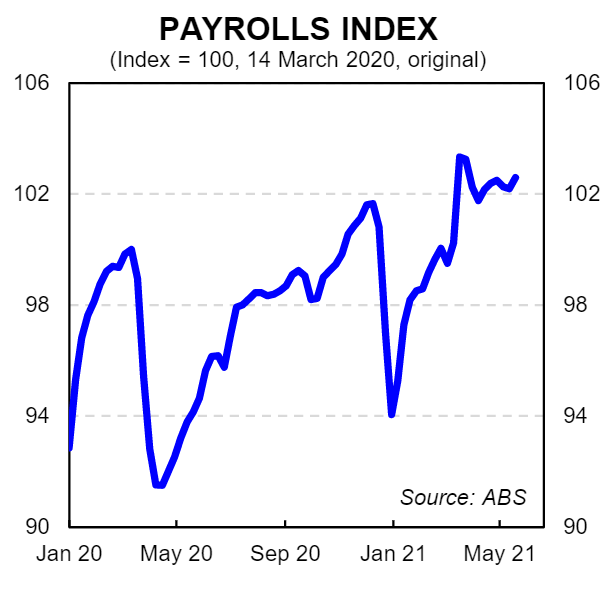By Gareth Aird, head of Australian economics at CBA.
Key Points
- Wages and salaries paid into CBA bank accounts lifted over May which points to growth in employment and hours worked in the month.
- The number of CBA customers receiving the JobSeeker payment continued to decline over May which indicates unemployment fell over the month.
- We forecast employment to rise by 20k in the May labour force survey following a 30.6k contraction in April.We expect the unemployment rate to fall by 0.1pptsto 5.4%on an unchanged participation rate.
May labour force survey –due Thursday 17 June
- (i)it will fully capture the impact of the expiry of JobKeeper on the labour market; and
- (ii)it is the last official read on the labour market ahead of the July RBA Board meeting where a decision will be announced on yield curve control and the bond buying program.
From a forecasting perspective, the May labour force data is a difficult task for economists. On the one hand, measures of labour demand like job vacancies and hiring intentions are red hot and point to a strong lift in employment. But working the other way is the expiry of JobKeeper which would have seen some workers stood down.
The ABS classifies a person as employed if they were stood down but had been paid for some part of the previous four weeks. This means that some workers who lost their job when the JobKeeper program expired in late March would have been considered employed in April even though their job had been terminated. Some of these people will have picked up another job in which case they will still be classified as employed in the May labour force survey.
Some workers stood down due the expiry of JobKeeper may not have yet found another job and may have been looking for a role in May in which case they will considered unemployed. Other workers stood down may have decided to take a temporary break from work in which case they will be considered neither employed or unemployed(i.e. they will leave the labour force).
Against this backdrop it is very hard to forecast the change in employment with a lot of conviction. Notwithstanding, there are some key pieces of data that can help to guide our forecasts. These relate to the weekly payrolls data and our internal data on the number of CBA bank accounts receiving JobSeeker and changes in wages and salaries paid into CBA bank accounts.
Wages and salaries paid into CBA bank accounts lifted over May which points to growth in employment and hours worked in the month.

Consistent with a lift in employment is our internal data on the number of CBA customers receiving JobSeeker. According to our data the number of people on JobSeeker declined through May.

The ABS payrolls data to the fortnight ending 22 May indicates payrolls have held broadly steady over the past six week (the data is quite volatile and is presented in original terms which complicates the interpreting process).

On balance we favour a lift in employment of 20k over May which would see the unemployment rate edge lower to 5.4% on an unchanged participation rate.
There is considerable uncertainty around our forecast for employment. But we have higher conviction on our call for the unemployment rate to move lower. It may be the case that the participation rate is the shock absorber if employment prints lower than our forecast.
Finally it is worth noting that the Internet Vacancy Index (IVI) for May (prelim.) was published during the week. The index rose again by 1.9% over the month. Job advertisements now exceedpre-COVID-19 levels by a whopping 46.0%. The data indicates that the labour market will tighten very quickly from here and a lift in wages growth is forthcoming.

